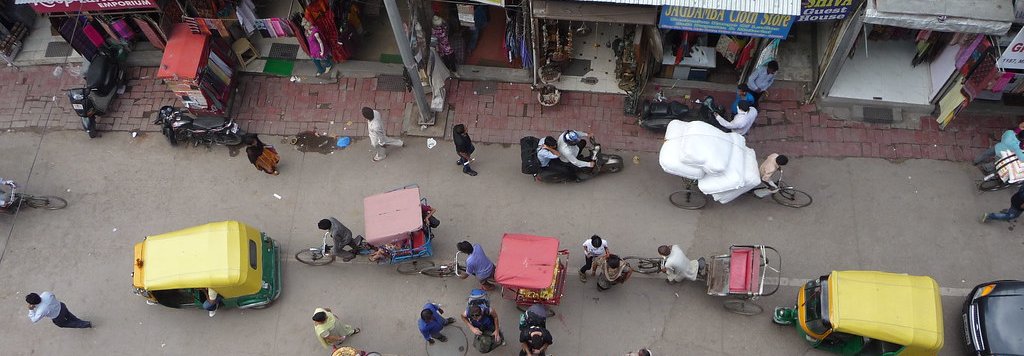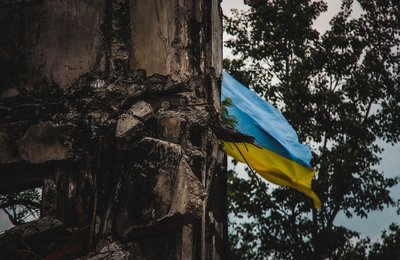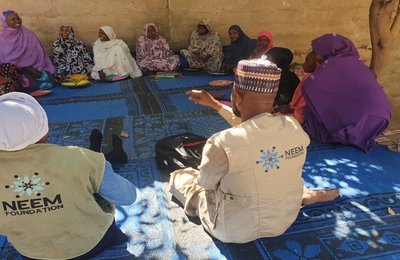Green Disability: Disabled Communities Leading Local Peacebuilding in Delhi’s Climate Crisis

Over the past few months, I spoke to more than 30 disabled individuals and caregivers from Delhi and neighbouring states. These were not formal interviews for a campaign or study. These were candid conversations, anonymous and unfiltered, shaped by the urgency of their voices. What emerged is a pattern of survival shaped not only by the heat but also by structural neglect.
Climate as Conflict: The Hidden War in Urban Heat
For people with limited mobility, every step outdoors in a heatwave becomes a negotiation of pain and risk. An elderly woman with post-polio paralysis, who uses a wheelchair, told me she hadn’t stepped out for ten consecutive days. “The sun burns the seat. There’s no shade, no shelter on the pavement. I feel like I’m imprisoned in my own home,” she said.
This isn’t a metaphor. It’s a form of confinement imposed by inaccessible infrastructure. Sidewalks without ramps, public parks without shaded rest areas, and inaccessible cooling centres effectively push people with disabilities out of public life. The state’s Heat Action Plan outlines public cooling spaces and awareness campaigns but lacks any mandate for accessibility or inclusion.
This absence is not just about oversight. It reveals a form of environmental exclusion that is experienced through silence – when no one asks, plans, or prepares for disabled communities during climate emergencies.
Peacebuilding Begins with Participation
At the heart of peacebuilding is the ability to participate. To gather, to speak, to be seen. During extreme heat events, that ability is routinely denied to disabled individuals. From local markets to community halls, the heat makes even the most basic civic activities inaccessible. A young man with muscular dystrophy shared that he stopped attending public disability forums – not out of disinterest but because reaching them during the heat had become too exhausting. “I don’t want to risk collapsing just to show up,” he said.
The cost of exclusion is cumulative. As physical participation dwindles, so does the visibility of disabled voices in climate policy and community decision-making. This erasure impacts resource allocation, emergency planning, and the design of supposedly “inclusive” interventions that never consulted the people they aim to support.
Mutual Aid as Everyday Peace Practice
Despite these barriers, many of those I spoke to are not passive victims. They are organisers of mutual aid, informal care networks, and hyperlocal information sharing. In one East Delhi neighbourhood, a caregiver collective shares SMS alerts about heat warnings and distributes electrolyte packets to those with chronic conditions. In another, disabled youth co-manage a WhatsApp group that coordinates electricity availability in their area – a critical need when devices like oxygen concentrators and CPAP machines are in use.
These decentralised, everyday efforts reflect a form of peacebuilding rarely recognised by formal institutions. They don’t fit traditional donor templates or government schemes. Yet, they are precisely the kind of grassroots resilience that sustains communities through environmental stress and social marginalisation.
Environmental Peace Must Include Disability Justice
Mainstream climate narratives often frame heatwaves as health or infrastructure crises. But for disabled individuals in Delhi, they are a matter of dignity. When accessible water is far away, when toilets are too hot to use safely, when assistive devices overheat or malfunction, the right to exist comfortably in one’s body becomes contested.
A middle-aged woman with multiple sclerosis put it this way: “It’s not just the heat. It’s that we’re expected to disappear when the city gets hard to live in.” This sense of invisibility – being unaccounted for in both policy and community responses – deepens the social wounds that climate disasters expose.
In global discussions about peace and climate resilience, the inclusion of disabled communities must move beyond tokenism. It requires us to reimagine participation not as an invitation but as a right. To consider disability not as a vulnerability alone but as a dimension of experience that can inform more equitable responses.
Pathways Forward
The insights from these conversations suggest a few clear directions for future work:
- Develop and fund accessibility-first responses to climate events, ensuring public cooling centres, transport systems, and digital alerts are designed with disabled users in mind.
- Involve disabled communities in the creation of Heat Action Plans and climate resilience frameworks – not merely as stakeholders to be consulted, but as co-designers.
- Recognise and support informal mutual aid networks that are already operating as peace infrastructures within marginalised communities.
- Promote disability-inclusive climate education that builds both awareness and capacity at the grassroots level.
Peace, like the climate, is not neutral. It is shaped by who gets to participate, who is considered when decisions are made, and whose suffering is acknowledged. In Delhi’s summer heat, disabled individuals and caregivers are not just facing a crisis of temperature – they are confronting a systemic silence.
The stories shared with me do not ask for sympathy. They demand recognition and structural change. As climate change intensifies and urban challenges mount, listening to those most affected is not optional. It is the only responsible way forward.








